Investigating Email: Younger Audiences and Email
03 Mar 2021
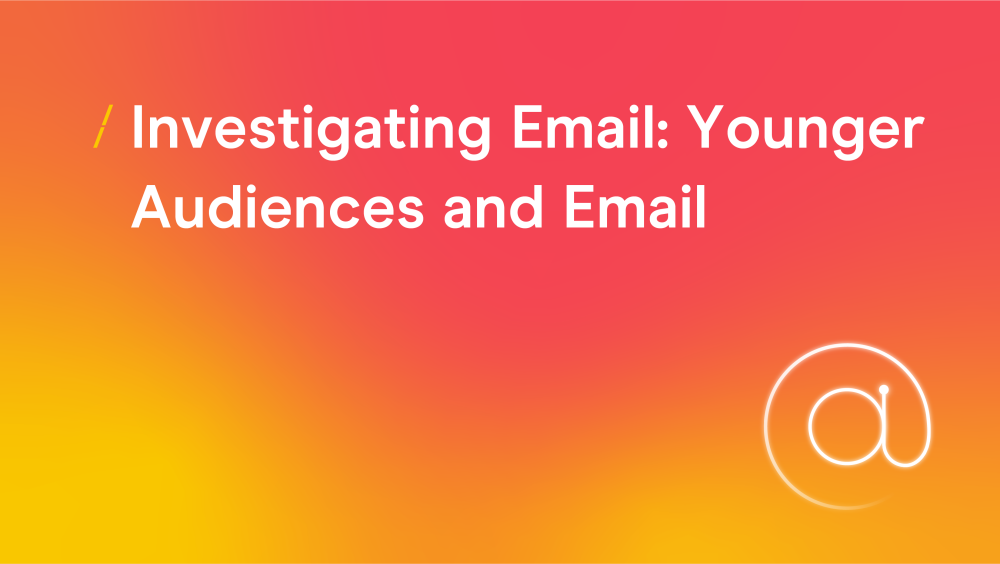
This article is written by Russell Dawson, senior email marketing professional who recently joined the Research Hub of the Email Council .
Detailing consumer sentiment towards email, the ‘Consumer Email Tracker 2020’ report, sponsored by Pure360, highlights that whilst email rightly remains as the preferred method of communication for all age groups, there were a number of standout points regarding younger audiences and their relationship with email that were worth highlighting for brand's consideration in future marketing efforts.
With organisations churning 20% - 40% of their database on average every year, brands need to ensure they take into account how younger audiences like Gen Z (born between 1995 and 2015) are interacting with their emails to ensure their subscriber base is kept replenished and active.
In this article we look at some of the key points from our surveyed 18 – 24-year-old group.
Considering a multi-channel approach is key
While the email channel is still the principal way that young audiences wish to be communicated by, they’re not as reliant on email compared to older age groups. Younger audiences also prefer to use other marketing channels in conjunction with email but for different purposes.
When asked what subjects are best served by communication methods, young audiences preferred email for all types, Yet there was a general trend that sees them preferring email less than other age groups for certain messages.
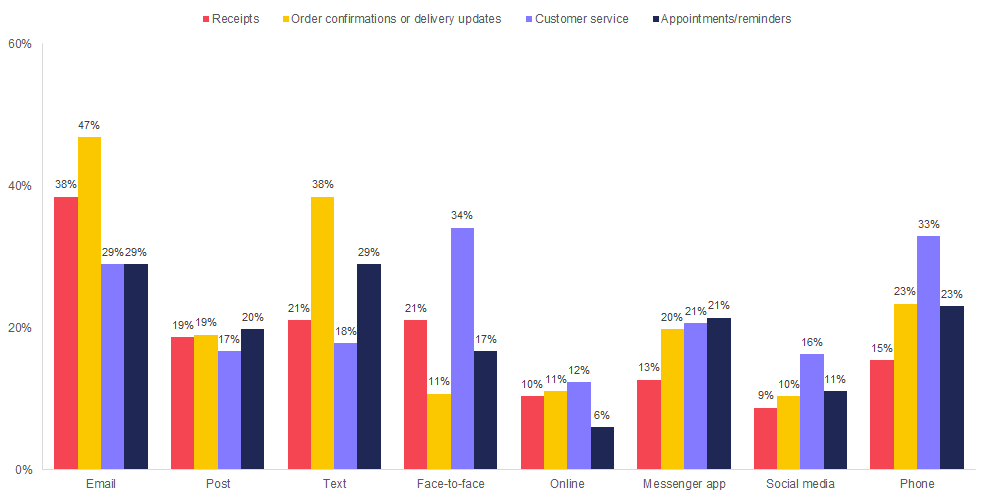
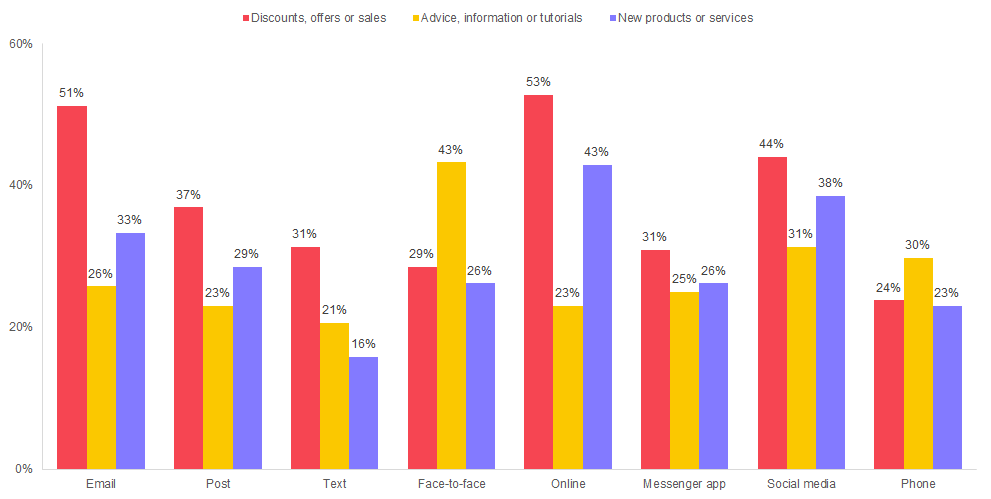
Young audiences preferred to receive discounts and advice by text, but favour other channels to receive appointments/reminders. This demonstrates an importance of an effective integrated multi-channel communication approach with younger audiences who interact with brands across different spaces. It seems there are areas where we still value human interaction – just ensure your message is aligned to how young audiences are using that particular channel.
Gmail is the inbox of choice...
2020 was the first-time respondents were asked which inbox provider they use.
We know a lot about Gmail users, so it’s no surprise to see that nearly half the young audience surveyed (46%) use Gmail as their primary inbox provider (a significant increase on the 34% for all age groups). This percentage was greater than the next leading providers, Yahoo and Hotmail, combined (33%) which are more popular with older age groups that are more likely to hold onto long-existing legacy accounts for convenience.
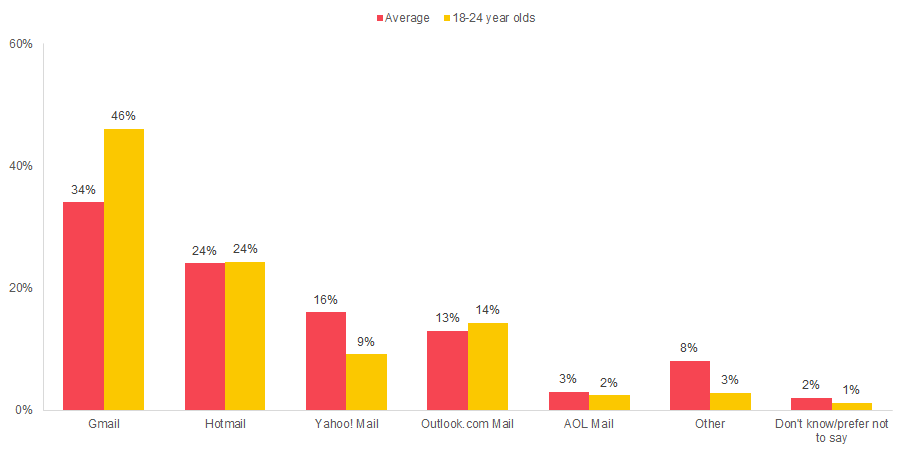
It does justify the consideration that brands should put into their email marketing to ensure it’s as optimised as possible for the Gmail inbox.
Brands should consider setting up BIMI (Brand Indicators for Message Identification) email authentication to increase brand value by displaying their logo to subscribers in the Gmail inbox and enhancing the subscriber experience. Ensuring your email is rendering correctly across the Gmail client and that your email weight is below 102kb to avoid clipping is paramount as most brand's unsubscribes are in the footer and you don’t want this cut off from view - subscribers might just reach for the junk/spam button instead if they can’t locate it.
Whilst AMP for Email’s case is still up for major-use adoption, email lists that are heavy with Gmail mobile users may find an opportunity in trialing out use cases with younger audiences who are geared towards adoption of new technology such as interactive features.
...and they’re using it on the move
Understanding how young audiences are using their inbox is a primary consideration in your marketing execution with less than one in five (19%) using desktop as the most frequent way of accessing their personal email address and prefer accessing email via their mobile (66% vs 45% average).
This demonstrates the importance of designing for mobile first for younger audiences and is open for real-time geolocation content and targeting. Whilst tablets feature in the mix, the percentages were significantly lower as a primary way of viewing email yet it’s always worth keeping your plain text versions clickable and engaging to the eye for those that use their smartwatch as a means of accessing their email.
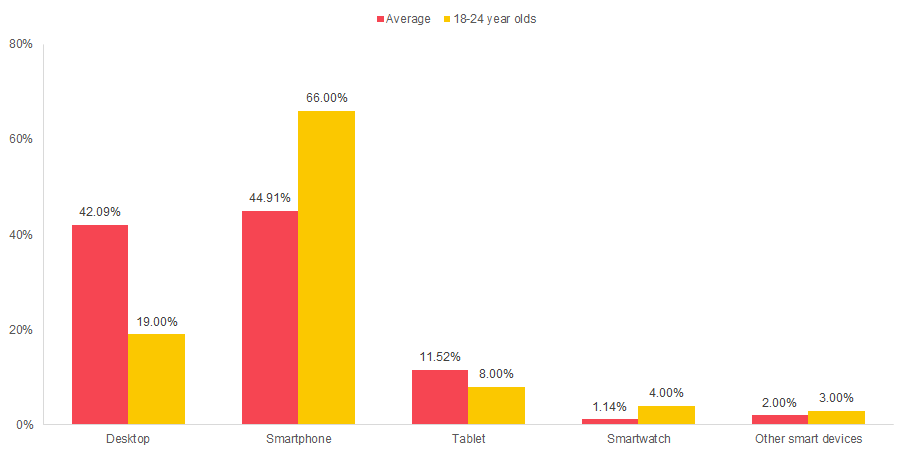
Brands are going to have to work harder to gain engagement
On average, those surveyed receive about 35 emails per week vs older consumers who claim to receive 19 emails a week more. 60% of 18-24 year olds admitted to opening and reading under half the emails they receive which is not surprising given that 80% considered less than half of the emails they receive to be termed as ‘useful’. In sharp contrast, 55% of all age groups reported to stated they open and read more than half the emails in their inbox.

When asked to best describe why young audiences like the emails they receive, they reported a preference for content that was more value focused such as tutorials, information and advice over other age groups. There were large decreases in a preference around brand familiarity, whether the email was entirely relevant and offer led emails. They are favorable to emails containing rich media, such as images or videos (17%) and funny/entertaining content (15%).
This appears to indicate that room in the inbox is at a premium with brands needing to focus on the importance of having a strategy behind not only their email copy and design but also which type of content is more likely to be engaged with.
It’s important to manage their values, expectations and preferences
Interestingly, post-GDPR the research has shown that one in three young consumers still wonder how brands acquired their email address. This is a reminder of the importance of a strong sign-up proposition and ensuing your welcome series details what the subscriber will receive in terms of content, information and frequency. Young audiences also appear to not be attached to an email address for the sake of it and happy to change up should their needs dictate it.
When it comes to expectations, young consumers are aware of being able to manage their communications and it appears they are leading that change, with expectations that brands should have preference centres where frequency and email types can be edited rather than just simply unsubscribing from all. For example, they would expect to unsubscribe from a brand's email but still automatically receive transactional emails or e-receipts.
It’s a reminder of the importance to personalise the relationship with them as a ‘one size fits all’ approach can lead brands to lose customers even when they don’t want to leave but simply adjust the relationship with the brand.
We’re seeing more of this type of personalisation with recourse from brands to opt-out of receiving any certain types of communications around potentially sensitive dates such Mother's Day or Valentine's Day.
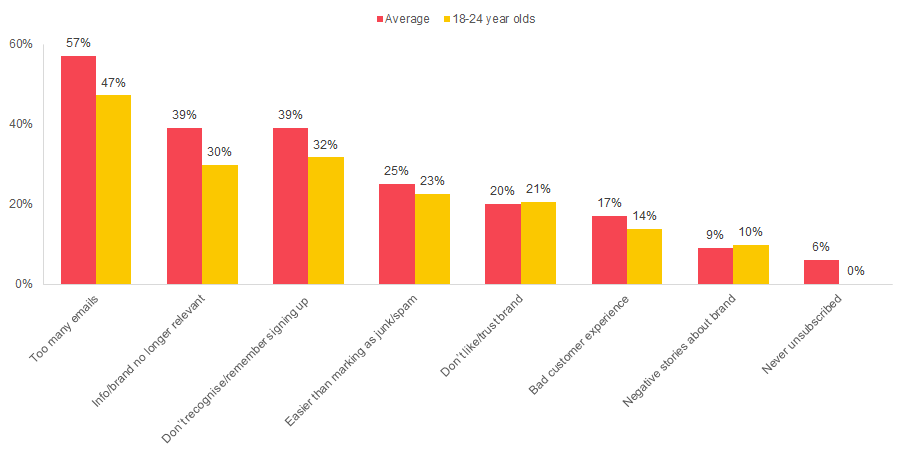
As a whole, when the DMA explored the current state of consent and preference management, businesses with preference management systems in place are more likely to report positive increases in their engagement rates (59%), ‘sales/business revenue (53%), customer database size (52%) and opt-in rates/sign-ups (47%).
Over time, we have seen that the ethics and credentials of brands are becoming an important part of the consideration phase for many consumers. This is a prerequisite when engaging with young audiences, whom are more in tune with alignment on shared values with a brand. It’s always pertinent to remind ourselves that behind every open and click, there is a real human at the other end and that empathy, compassion and tone of voice is crucial during this difficult period.
Takeaways
So, how can brands ensure that they are keeping in line with young audiences expectations and nurture their future long-term consumers?
-
Ensure you’re using a multi-channel mix with email at the forefront
-
Remember that emails are optimised for Gmail rendering and delivery (don’t cheat the tabs!)
-
Make sure that emails are focused on mobile optimisation with responsive landing pages
-
Create a strong opt-in proposition, pushing your brand values clearly
-
Allow flexibility when it comes to which communication types and cadence suits them
To find out more about the latest analysis and findings from the DMA’s email research series, visit the research section of the website and to sign-up to attend the events launching the 2021 research, visit our events and upcoming webinars page.




Please login to comment.
Comments